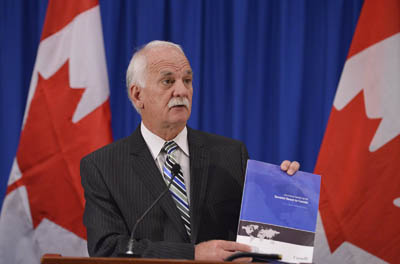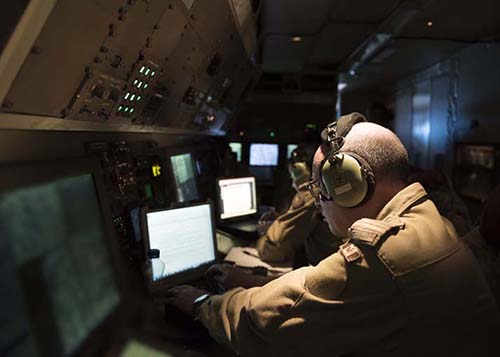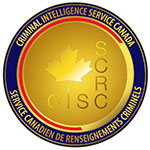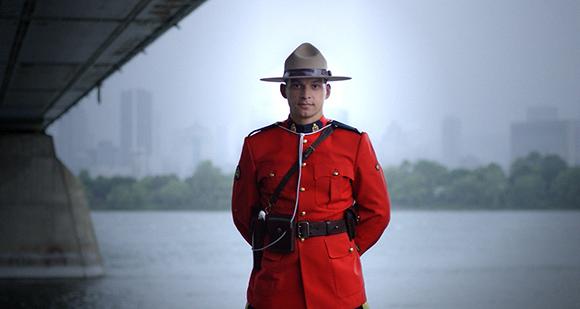Il modus operandi of international terrorism and the new problems attached to the birth of the Islamic State (ISIS) and the war in Syria have launched a new and difficult challenge to Western democracies. Within each state governments have developed a "counter-terrorism" policy whose application has upset, in several cases, the traditional conception of police policy. Unfortunately, the effectiveness of counter-terrorism measures causes effects on the population, whether it is hit by attacks or whether it remains immune. Many governments have adapted their judicial system to the new threat and at the same time reorganized the police who, more than any other body, must coordinate their work with the various state and private bodies involved in the fight against Islamism. Among the most advanced countries in this sense is certainly Great Britain with its program called CONTEST from which Canada (State of the Commonwealth from the 1931) has drawn inspiration for its own war on terror.
"The Strategy "
The 23 June 1985 the Air India 182 flight that operated on the Montreal - Delhi route exploded on the Atlantic Ocean just south of Ireland. All 329 passengers were killed. The responsibility for such a massacre was attributed to the Indian terrorist group Babbar Khalsa (BK) whose members were all Sikh extremists. Most victims of the 182 flight were Canadian citizens and all had Indian origins. The attack had strong repercussions on Canadian politics, especially in relation to its police policies against terrorism1. The RCMP (Royal Canadian Mounted Police) had presented of a possible attack, nonetheless the lack of coordination with the CSIS (Canadian Security Intelligence Service) showed considerable investigative flaws. The succession of attacks and the serious tragedy of the 9 / 11 prompted the Canadian government to adopt more incisive measures against terrorism and the first official act issued to protect itself from this global threat was the Bill C-36 or better known as Anti Terrorism Act "An omnibus bill designed to combat terrorism at various level"2. The fundamental nucleus of this first provision included a series of “amendments to the Criminal Code designed to disable terrorist groups and their supporters, by defining“ terrorist activity ”; by creating a process for listing an entity [...] "but above all improved" to use of investigative hearings and with a recognizance with conditions "3. A first investigation carried out by decision-makers Canadians on the application of the law revealed some problems related to the possible violation of civil liberties. For example, Lorne Sossin of the University of Toronto criticized the law accusing Canada of having "betrayed its own values by sacrificing civil liberties in exchange for enhancing investigative detection powers"4. Concretely, the adoption of restrictive measures and new investigative procedures against terrorist activities implied the possibility of harming the civil liberties of Canadians. The police and security services abruptly entered the lives of many citizens by checking for suspicious phone calls, constantly monitoring public and even private places. A substantial improvement to the measures against international terrorism took place on June 23 2011 with the approval of Kanishka Project a "researched more effective policies and tools to counter terrorism and violent extremism in Canada"5. The government project explored and deepened some issues related to modus operandi of the Islamists, their origin and all the phenomena that led to radicalization. No area had to be overlooked, including that of the relationship between intimidation and public opinion reaction.
 Two years later, the 9 February 2012, the Canadian Minister for Public Security, The Honorable Vic Towes, made public the new counter-terrorism measures transcribed in the Building Resilience Against Terrorism: Canada's Counterterrorism Strategy or better known as "The Strategy". The main subjects of this provision were Islamist terrorists, but also terrorism tout court including the separatists (Front de Libération du Quebec FLQ), the extreme-right one, but above all the terrorism of an international nature that affected the interests of Canada inside and outside the country.
Two years later, the 9 February 2012, the Canadian Minister for Public Security, The Honorable Vic Towes, made public the new counter-terrorism measures transcribed in the Building Resilience Against Terrorism: Canada's Counterterrorism Strategy or better known as "The Strategy". The main subjects of this provision were Islamist terrorists, but also terrorism tout court including the separatists (Front de Libération du Quebec FLQ), the extreme-right one, but above all the terrorism of an international nature that affected the interests of Canada inside and outside the country.
Among the various objectives set by the government, the most important was the optimization of the use of law enforcement agencies through concrete work involving every sector of the state. This was a particularly demanding operation because we must not forget that Canada is a federal state divided into ten provinces, three territories and different municipalities. In addition, there was a general awareness of what was the real threat of terrorists who used Canada both as a target and as a starting point for carrying out attacks all over the world6.
The Strategy is divided into four different actions: Prevent, Detect, Deny, and Respond.
Before explaining each single point we must take into account some fundamental principles that regulate the fight against crime in Canada, of whatever type it may be. The Canadian state is founded on democratic principles and the use of force is governed by the laws in force which are based on respect for the principles of individual freedom and human rights. Contrary to the argument put forward by Lorne Sossin, the Canadian government has always been concerned not to shake public opinion by adopting measures that are too invasive towards its citizens. Already some years before the 2012, David Charters and Wesley Wark emphasized the importance of intelligence by specifying as "intelligence as our first line of defense against terrorism." [...] Measures are required to further raise the profile of federal government intelligence, to increase centralization and coordination on intelligence work "7. The fight against terrorism can effectively emphasize the role of the secret services compared to that of the police. In this sense, the points of the "Strategy" delimit the boundaries of the competences of each body by creating a common method and a sharing of information between the police (Low policing) and intelligence (High policing).
The first step deals with prevention as well as "diminish the factors contributing to terrorism by actively engaging with individuals, communities and international partners"8. The most recent episodes have shown how the martyrdom of one shahid rather than the murderous raids of a commando ready to strike arise within Muslim communities and not always through mosques. Marc Sageman called them the "Third Wave": "these groups are autonomous and unknow to al Qaeda Central. These new groups must finance their own operations "9. The program studied by the Canadian authorities provides for the coordination of group work between the security authorities and the various Muslim communities through the Round Tables "focuses primarily on building partnerships with groups and individuals in Canadian communities"10. At the same time as the activities carried out by the police and the CSIS there are two anti-radicalization programs that are achieving some success in Canada. The first was designed by Muhammed Robert Heft who "helped many youths who turned towards radicalization and brought them away from that destructive state"11. The second was developed by Sayyid Ahmed Amiruddin and is based "on a method of psycho-spiritual rehabilitation therapy that developed based on the Sufi approach"12.
 The second step in the strategy against terrorism is that of the "Detect" which has as its center of gravity an accurate investigation and intelligence work. In theory the work of "low policing" carried out by the RCMP could somehow clash with the methods followed by the Intelligence agencies (High policing). To avoid any friction it is really important that information is shared at various levels and with as many subjects as possible. For example, in addition to the police and the secret service, the Finance Department is involved with the FINTRAC program13 which "contributes to the prevention and deterrence of terrorist financing"14.
The second step in the strategy against terrorism is that of the "Detect" which has as its center of gravity an accurate investigation and intelligence work. In theory the work of "low policing" carried out by the RCMP could somehow clash with the methods followed by the Intelligence agencies (High policing). To avoid any friction it is really important that information is shared at various levels and with as many subjects as possible. For example, in addition to the police and the secret service, the Finance Department is involved with the FINTRAC program13 which "contributes to the prevention and deterrence of terrorist financing"14.
The third step is the "Deny" which is to prevent terrorists from hitting Canadians and Canada's interests in the world. The field of investigation and cooperation is therefore extended to other allied countries thanks to a global sharing of information. The DFAIT (Department of Foreign Affairs and International Trade) is the main person responsible for this coordination which "includes, for example, leading bilateral security consultations on counter-terrorism issue with a range of security partners"15. In this sense, the Canadian government has implemented a series of restrictions on access to the country, thanks to increasingly widespread checks on incoming people made by agents of the Canadian Border Services Agency (CSBA) in collaboration with the American authorities.
The last point of the strategy is the "Respond" aimed primarily at minimizing the effects that terrorism has on the population. The main objective of a terrorist attack is to spread insecurity, anxiety and fear among the population, undermining the relationship of trust between population and government. Having suffered a terrorist attack, the Canadian government has therefore understood the need to limit its impact by intervening with the most appropriate instruments.
The key to success for effective government action is the multi-level involvement of government authorities, but above all private entities. The elaboration of the Canadian strategy took place on the wave of what in England they called CONTEST which includes four key elements: Pursue, Prevent, Protect and Prepare16. Before the 9 / 11, Canada considered terrorism as a problem with international implications, however the GWOT declared by US President George Bush and the involvement of the army changed the vision according to which the US state "is often see as a fireproofhouse"17. The birth of the Islamic State is the massive recruitment of guerrillas in every part of the world has emphasized the delicate issue of foreign fighters and their return to their homeland: "the extremist traveller's pose to both countries and to the countries to which the travel has become more pressing with their participation in conflicts such as Syria, Somalia, Iraq and Afghanistan "18.
 In this particular context, the Criminal Intelligence Service of Canada plays a fundamental role: from the 1970 - the year in which it was born - the CISC has considerably expanded its competences thanks also to the creation of the Automated Criminal Intelligence Information System “one of the world's first police computer networks. The CISC gathers raw data and specific intelligence and pools for further refinement and analysis19. The exaggerated use of intelligence as an investigative tool often leads to negative results, especially if included in a policy of cooperation with the population20. In order to avoid unnecessary tensions, interaction between the police and the community is essential with the subsequent transfer of information to the highest levels. The Royal Canadian Mounted Police (RCMP) has organized joint exercises "in which community members are given the opportunity to take the role of the police conducting a terrorism investigation"21. In this way the population was able to realize how Canadian security agencies work by personally verifying the rules of transparency adopted by them.
In this particular context, the Criminal Intelligence Service of Canada plays a fundamental role: from the 1970 - the year in which it was born - the CISC has considerably expanded its competences thanks also to the creation of the Automated Criminal Intelligence Information System “one of the world's first police computer networks. The CISC gathers raw data and specific intelligence and pools for further refinement and analysis19. The exaggerated use of intelligence as an investigative tool often leads to negative results, especially if included in a policy of cooperation with the population20. In order to avoid unnecessary tensions, interaction between the police and the community is essential with the subsequent transfer of information to the highest levels. The Royal Canadian Mounted Police (RCMP) has organized joint exercises "in which community members are given the opportunity to take the role of the police conducting a terrorism investigation"21. In this way the population was able to realize how Canadian security agencies work by personally verifying the rules of transparency adopted by them.
Analysis
If we examine the database that collects data on terrorist attacks in the world, we note that Canada has not suffered too much from the aggression of Islamists. In recent years the Canadian government has however increased precautionary measures, especially after what happened in Europe and to face the dangerous phenomenon of foreign fighters. In September, 2014 the Canadian government allocated 15 million dollars to implement security measures against Canadian extremists who chose to fight with ISIS. At the legislative level, in April of the 2013, the government approved the Bill S-7 the Combating Terrorism Act which "contains provisions for investigative hearings and preventive arrests in circumstances where a terrorism offense is under investigation"22. The de-radicalization process is aligned with international strategies with the creation of programs and following the best practices that fit directly into the social fabric of the various Islamic communities in the country. In the 2007 the RCMP published an interesting report - "Words Make Words" - in which it explained that "the most succesful strategy against Al Qaida - type extremism in the long term was rooted in the use of" alternative narratives "23.
Syria, Iraq are the main destinations of Canadian jihadists whose origins, often times, have nothing to do with the destination country. Otherwise, Somalia, a country where al-Shabab terrorists are militating, attracts several Canadians of Somali origin24. The critical points for Canadians continue to be abroad, however the measures taken by the government and its police policies are destined to reap good results.
1 - "In late 2000 the Canadian government charged two men from British Columbia in the Flight 182 bombing - cleric Ajaib Singh Bagri and businessman Ripudaman Singh Malik". P. Chalk, Air India Flight 182 bombing, in Encyclopedia of Terrorism, ed. Peter Chalk (Santa Barbara CA: ABC CLIO, 2013), 14-15.
2 - The Views of the Canadian Scholars on the Impact of the Anti-Terrorism Act, University of Ottawa, Department of Criminology, March 31, 2004, 1.
3 - Ibid.
4 - Ibid, 9.
5 - Terrance S. Carter - Nancy E. Claridge, "Canada's Counter-Terrorism Strategy targets environmentalism", Anti-Terrorism & Charity Law Alert, 31, (2010): 2.
6 - “First, Canada has been and will continue to be a target of terrorists. Second, Canadian citizens and permanent residents are known to have been involved in terrorist activities or associated with international terrorist groups. Third, terrorist may try to use Canada as a base to finance, support or conduct attacks against other countries ". Government of Canada, Building Resilence Against Terrorism, (2013): 10.
7 - The Views of Canadian Scholars, 17.
8 - Building Resilence, 15.
9 - Marc Sageman, Leaderless Jihad. Terror Networks in the Twenty-First Century (Philadelphia: University Press, 2008), 140.
10 - Building Resilence, 16.
11 - Wagdy Loza, "The Need for Effective Intervention Programs to Prevent Islamic Extremists and Terrorism Recruitment in Western Countries with Special Emphasis on Canada, The Mackenzie Institute. Security Matters, 2015, 4. URL: http://mackenzieinstitute.com/need-effective-intervention-programs-preve...
12 - Ibid.
13 - Financial Transaction and Reports Analysis Center.
14 - “The primary Government of Canada collection organization CSIS, the Communications Security Establishment Canada (CSEC) and the RCMP. [...] CSEC acquires and provides foreign signals intelligence (SIGINT) in accordance with the Government's Intelligence priorities and provides technical and operational support for law enforcement and security intelligence agencies ". Building Resilence, 18.
15 - Ibid, 22.
16 - “CONTEST. The United Kingdom's Strategy for Countering Terrorism ", (London: TSO Publishing, 2011), 10. URL: https://www.gov.uk/government/uploads/system/uploads/attachment_data/fil...
17 - “Confronting Complex Challanges. Hybrid Warfare. Canadian Armed Forces Reserves. Conventional Military Capabilities ", The Mackenzie Institute Security Matters, Spring 2016, 16.
18 - "2014 Public Report on the Terrorist Threat to Canada", 2014, 3. URL: https://www.publicsafety.gc.ca/cnt/rsrcs/pblctns/2014-pblc-rpr-trrrst-th...
19 - "A Revolution in Canada's Cops", The Mackenzie Institute. Security Matters, 2015, 2. URL: http://mackenzieinstitute.com/a-revolution-in-canadas-cops/
20 - "The term" intelligence "may have negative connotations in society or among certain communities. This is more likely to be the case where police are beloved to have acted inappropriately in the past ”. "Preventing Terrorism and Countering Violent Extremism and Radicalization that Lead to Terrorism: A Community-Policing Approach", OSCE Organization for Security and Co-operation in Europe, 2014, 83. URL: http://www.osce.org/atu/111438
21 - Briefing, participants are beginning to investigate smaller teams and, with a facilitator, begin their investigation. Each team is given a police note and instructed to keep an accurate note. "A series of inputs are provided, and the investigators are making decisions based on information provided to them in their briefings." Ibid, 99.
22 - Justine Hall, "Canadian Foreign Fighters and ISIS" (Major Research Paper, University of Ottawa, 2015), 32.
23 - Ibid, 52.
24 - Christopher Anzalone, "Canadian Foreign Fighters in Iraq and Syria", CTC Sentinel, vol. 8, Issue 4, April 2015.
(photo: Government of Canada)












